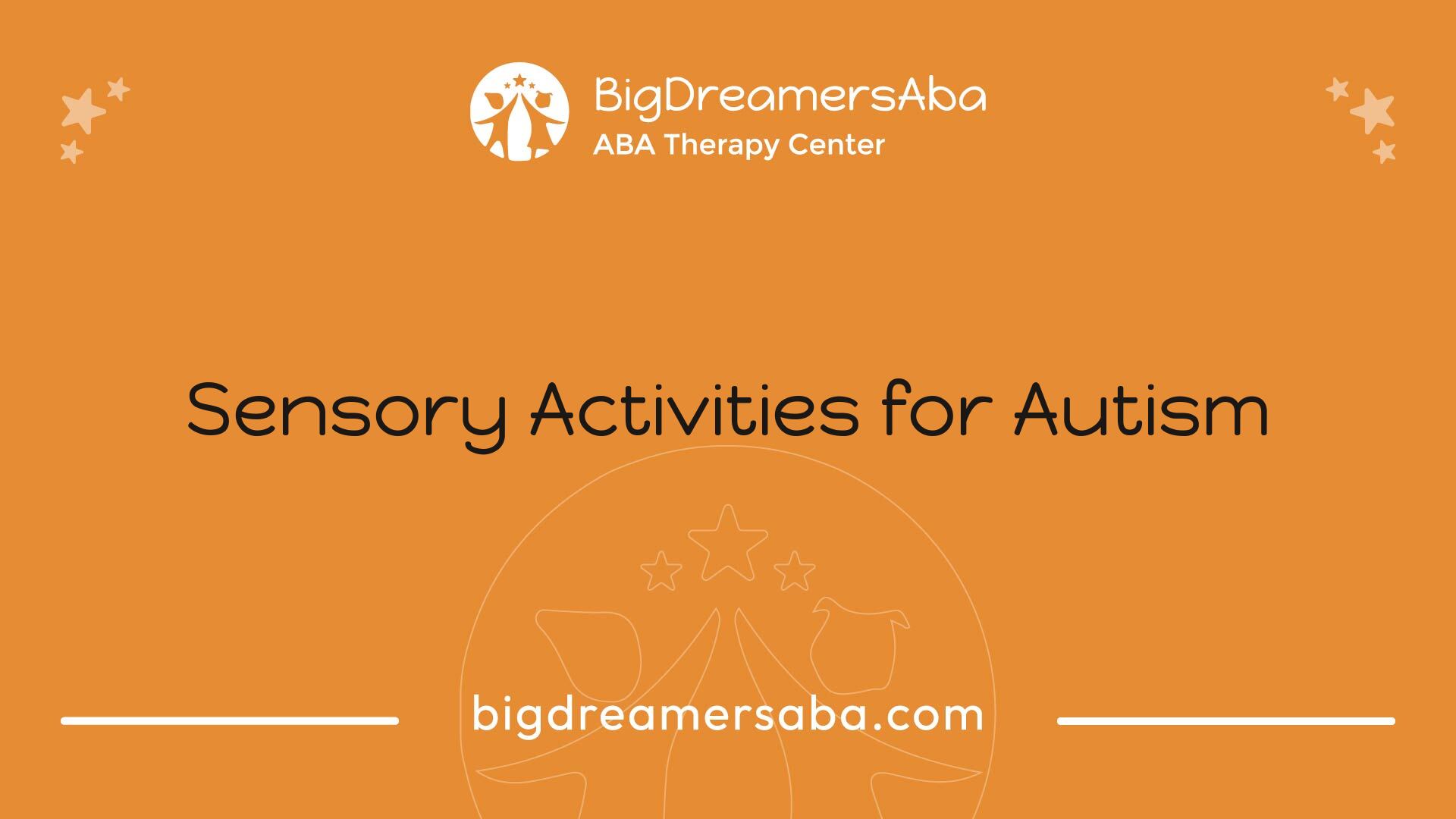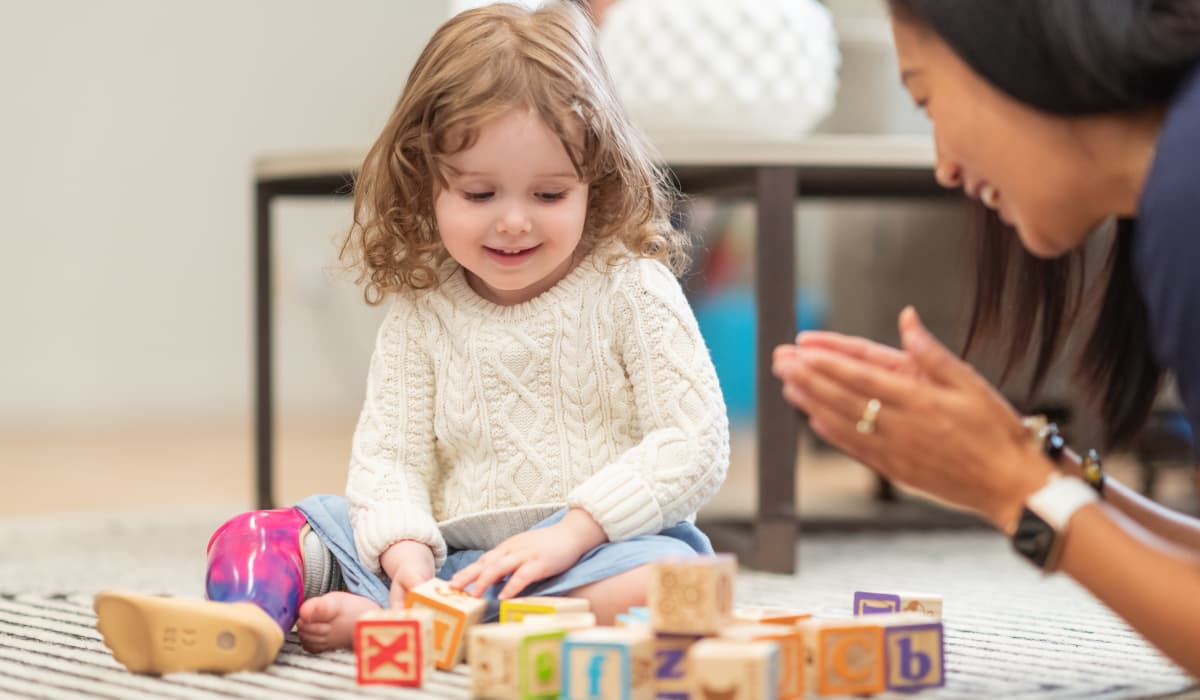Innovative Sensory Table Ideas for Autism Success
Explore innovative sensory table ideas for autism to enhance engagement and support sensory development!


Understanding Sensory Activities
Understanding sensory activities is vital for recognizing their impact on development, especially for children with autism. Sensory bins, in particular, are a beneficial way to engage children through hands-on experiences.
Benefits of Sensory Bins
Sensory bins provide children with the opportunity to explore and learn through tactile play that engages multiple senses. These bins are versatile and can be themed around holidays, seasons, or academic skills to enhance the play experience. Here are some key benefits of sensory bins:
BenefitDescriptionCognitive DevelopmentSensory bins support cognitive growth by encouraging exploration and problem-solving.Language DevelopmentPlaying with sensory bins helps build vocabulary as children express their experiences and describe their actions. (Salusu Health)Fine Motor SkillsActivities such as scooping and pouring help enhance fine motor skills. Sensory ExplorationChildren interact with various textures, colors, and materials, fostering an understanding of their environment.Emotional RegulationEngaging with sensory materials can provide calming effects, helping children manage emotions.
Importance for Autism
Sensory activities are particularly crucial for individuals with autism. They engage and stimulate the senses, providing a supportive environment that helps these individuals thrive. Sensory bins, among other activities, can address specific sensory processing issues associated with autism. These activities can significantly aid in:
AspectImportanceSkill DevelopmentThey support fine motor skills, which are essential for daily activities.Social InteractionSensory play can be a common ground for social interaction among peers, helping to build communication skills.Understanding Sensory NeedsEngaging in sensory activities helps identify the sensory preferences and aversions of children with autism, aiding in tailoring their environments for better comfort.
Overall, sensory bins and activities are beneficial tools for helping children with autism navigate their sensory worlds. For more ideas on creating supportive environments, explore our article on creating a sensory-friendly environment.

Sensory Activities for Autism
Sensory activities play a vital role in supporting children with autism by creating engaging, adaptable environments. Such activities can be categorized into visual, auditory, and tactile experiences, each designed to promote exploration and development.
Visual Sensory Activities
Visual sensory activities are essential for stimulating the visual senses of children with autism. These activities can promote visual attention and sensory integration. Here are some examples:
ActivityDescriptionSensory BinsFilled with colorful objects and materials, sensory bins encourage exploration and discovery.Light PlayUsing light sources like LED lights or fiber optics can enhance visual stimulation.Visual Stimulation ActivitiesItems that reflect light or produce colors, such as prisms or light filters, can capture attention.
These activities, as noted by Adinaaba, facilitate sensory exploration and encourage cognitive connections within the brain.
Auditory Sensory Activities
Auditory sensory activities are aimed at improving auditory processing skills and promoting sensory integration. Engaging in these activities can benefit children with autism in various ways. Some effective auditory activities include:
ActivityDescriptionMusic TherapyListening to or creating music can enhance auditory skills and emotional expression.Sound ExplorationIntroducing different sounds from nature or instruments allows for auditory familiarity.Quiet SpacesCreating areas designed for reduced noise can help in managing sensory overload and focusing on auditory inputs.
Engaging in auditory sensory activities can significantly support sensory development and well-being, as outlined by Adinaaba.
Tactile Sensory Activities
Tactile sensory activities focus on engaging the sense of touch, which is crucial for children with autism. These activities may include:
ActivityDescriptionSensory Play with Textured MaterialsUtilizing fabrics, sand, or clay to provide varied tactile experiences.Sensory Fidget ToysDesigned to keep hands busy, fidget toys help improve focus and reduce anxiety.Messy Play ExperiencesActivities involving substances like water, foam, or gel can offer rich tactile feedback.
These tactile experiences help children learn to navigate their sensory needs effectively, promoting self-regulation and exploration [1].
Overall, incorporating various sensory activities can lead to enhanced sensory processing skills and promote overall well-being. For more insights on creating a sensory-friendly setting, explore our articles on creating a sensory-friendly environment and managing sensory overload in autism.

DIY Sensory Table Ideas
Creating a sensory table can offer engaging experiences for children with autism. Below are some innovative DIY sensory table ideas that can facilitate sensory exploration and learning.
Moon Dough Table
A moon dough table can be an exciting sensory experience for children. This dough is made from a simple mixture of flour and baby oil, which creates a tactile experience that is both soft and moldable. The unique texture allows children to shape and manipulate the dough, fostering creativity and imaginative play. Additionally, this setup can spark interest in science by introducing concepts related to texture and composition.
IngredientAmountAll-Purpose Flour8 cupsBaby Oil1 cup
Children can engage in various activities with moon dough, such as creating shapes, figures, or structures, enhancing their fine motor skills while enjoying sensory exploration. For more ideas on sensory toys, visit sensory toys for autism.
Water Table Engagement
Water tables can offer endless opportunities for sensory play. Children can explore different water features using scoops, cups, and other tools, promoting the development of hand-eye coordination and spatial awareness. Adding small toys or natural elements like rocks and leaves can further enrich the experience.
ItemPurposeScoopsEnhances fine motor skillsCupsEncourages pouring and measuringSmall ToysPromotes imaginative playNatural ElementsIntroduces sensory experiences from nature
Water tables are particularly beneficial due to their interactive nature, which encourages social play and group activities. To learn about similar tools for sensory engagement, see our article on free sensory toys for autism.
Sand Table Exploration
Sand tables provide another wonderful DIY sensory table idea. Filled with sand, these tables allow children to dig, bury, and discover objects hidden within. This tactile experience can be soothing for children with sensory processing issues, providing a calming environment to explore texture and movement.
ItemPurposeSandPrimary sensory materialTools (shovels, molds)Encourage creative building and diggingHidden ObjectsPromotes exploratory play and discovery
When creating a sand table, it's often helpful to offer a variety of textures and objects for children to interact with, keeping them engaged and stimulated. For insights on designing effective sensory spaces, check our article on creating a sensory-friendly environment.
These DIY sensory table ideas can significantly aid in sensory processing for children with autism, supporting their development through fun and interactive play. For more guidance on sensory activities, refer to our resources on understanding sensory processing issues in autism.

Sensory Toys for Autism
Sensory toys play a significant role in supporting individuals on the autism spectrum. These specially designed tools cater to diverse sensory needs, offering opportunities to engage the senses while promoting calmness and focus.
Stimulating the Senses
Sensory toys provide critical stimulation across various sensory modalities. They allow individuals with autism to experience different textures, sounds, and visual inputs, which can help in regulating their sensory systems. Engaging with these toys enables users to explore their senses in a structured and safe environment. The variety of experiences these toys offer can significantly contribute to developing essential skills, including:
Type of Sensory StimulationSkills DevelopedTextural StimulationFine motor skills, hand-eye coordinationAuditory StimulationAuditory skills, sensory integrationVisual StimulationVisual perception, awareness
Sensory toys can assist those with autism in relaxing, self-regulating, and reducing anxiety while enhancing attention and focus. They serve as effective tools for redirecting attention, allowing for improved concentration during various tasks.
Regulating Sensory Input
Regulating sensory input is crucial for individuals with autism, who may experience sensory overload or have heightened responses to sensory stimuli. Sensory toys serve this purpose by providing a means to manage sensory experiences effectively. By strategically selecting toys that fit individual needs, users can:
Sensory toys are categorized based on the type of stimulation they provide, and selecting the right toys can greatly impact the sensory experience. It is essential to consider age-appropriate options that align with the user's developmental stages. The choice between DIY or store-bought toys often depends on personal preferences, budget constraints, and specific sensory requirements [2].
By integrating sensory toys into activities, families and caregivers can create an enriching environment that supports the unique sensory processing needs of individuals with autism. For further insights on creating a sensory-friendly atmosphere, explore our resources on creating a sensory-friendly environment and managing sensory overload in autism.

Sensory Table Decoration Ideas
Creating an engaging sensory table for autism requires thoughtful decoration and consideration of individual needs. This section focuses on how to enrich these environments and tailor them for specific sensory preferences while utilizing various sensory table ideas for autism.
Enriching Environments
An enriched environment plays a significant role in enhancing sensory experiences for individuals with autism. Different textures, colors, and materials can stimulate the senses and encourage exploration. Incorporating bright colors and varied materials can visually engage users, making the sensory table inviting.
Some effective decoration ideas include:
Decoration TypeExamplesPurposeColorful MaterialsColored rice, beadsVisual stimulationTextured ElementsFur, sand, sequinsTactile explorationThemed Sensory SetsSea shells, plant figurinesImaginative play and themed engagement
These elements can help create a structured and controlled sensory experience promoting exploration at their own pace. Sensory activities play a significant role in the development and well-being of children with autism, positively impacting their overall sensory processing abilities [1].
Tailoring for Individual Needs
Every individual has unique sensory preferences and challenges. Tailoring the sensory table to meet these specific needs can provide more meaningful experiences. Adapting the sensory environment may involve:
A well-tailored sensory table can aid in regulating sensory input, as sensory toys are especially designed to stimulate the senses and cater to the unique sensory needs of individuals on the autism spectrum [2].
Combining these strategies encourages individuals with autism to explore and engage meaningfully with their environment, fostering a sense of comfort and security. For further insights, explore our resources on creating a sensory-friendly environment and managing sensory overload in autism.
References
[2]:
Recent articles

ABA Techniques for Picky Eaters: Building Better Habits

How Social School Support Makes School Transitions Easier for Children
